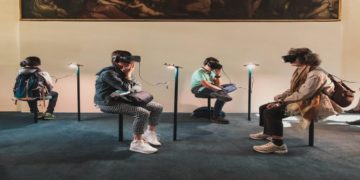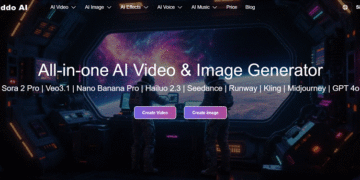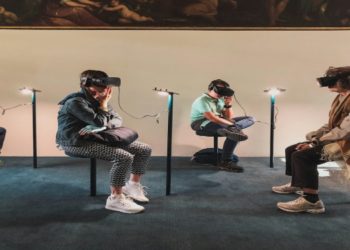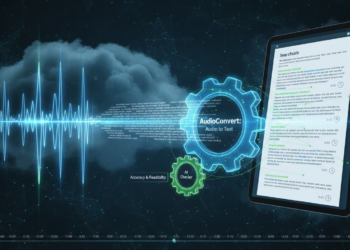Introduction
In today’s data-driven world, few professionals manage to bridge the gap between analytics, marketing strategy, and academic research as seamlessly as Raabia Riaz. As a lead analyst at NAUF Networks, Raabia brings together data science precision with marketing creativity.
In this exclusive interview, she talks about her research on gaming communities and the future of data-driven marketing.
David: Raabia, thank you for joining us today. You’ve managed to build an impressive profile that combines data science, marketing analytics, and academic research. Could you start by telling us a bit about your current role?
Raabia Riaz:
Thank you for having me! Yes, I currently work as a Lead Analyst at NAUF Networks, where my focus is on data analytics—I analyze complex datasets using Python (pandas, NumPy) and SQL, develop ETL workflows, and create interactive dashboards in Power BI and Tableau. It’s about transforming raw data into actionable insights that help drive business strategy and operational decisions.
David: That’s amazing! How has your background in data analytics shaped the way you approach marketing and community engagement?
Raabia Riaz:
It’s changed everything. I think the days of relying purely on intuition or isolated metrics in marketing are long gone. Data science allows us to understand the why behind behavior—not just clicks and impressions, but sentiment, motivation, and engagement patterns.
For example, I often use predictive analytics to identify emerging trends or to forecast campaign performance. When I bring that into marketing strategy, it means we can anticipate audience needs instead of reacting after the fact.
I also care deeply about data validation and integrity. Whether I’m analyzing social sentiment or performance data, I make sure the results are accurate, ethically gathered, and representative. Clean data leads to clean decisions.
David: You’ve also been involved in academic research — your OUP paper on mobile football gaming communities has been very well received. Could you tell us what inspired that research?
Raabia Riaz:
Of course, I was invited as a guest contributor by my peers in tech industry. I shared valuable insights from my experience and expertise within the performance marketing to mainly in the social media industry. In this paper, even though I wasn’t the first or the second author, but the guest contribution on my side was something that has earned me praise in the eyes of the audience.
The paper, “Analysing Community Engagement in Popular Mobile Football Games,” explored how players interact across Reddit, Facebook, and Twitter in games like FIFA Mobile, Dream League Soccer, and Top Eleven.
What fascinated me was how social media has become an extension of gaming culture — players don’t just play; they build communities, share strategies, and even influence how the games evolve. Using sentiment analysis and predictive models, we found that platforms like Facebook Groups generated the highest engagement, while Reddit offered the most detailed discussions.
It was exciting to use data scraping, CRISP-DM methodology, and Python-based sentiment tools to bring a data-driven understanding of something so socially dynamic.
David: That study concluded by recommending an ethnographic follow-up, which you’re now working on — “Inside the Game: Community, Monetisation, and Moderation in Popular Mobile Football Gaming.” How does this next phase expand your research?
Raabia Riaz:
Yes, the ethnography builds on the quantitative foundation of the OUP study but dives into human stories. Numbers can tell us what’s happening, but ethnography helps us understand why.
We’re exploring issues like monetisation models, platform moderation, and toxic behaviour, but also the positive — community support, creativity, and friendship that form within these gaming spaces. I’ve been part of these communities for over three years, so I have firsthand insight into how they evolve.
We’re combining semi-structured interviews, NVivo thematic coding, and sentiment mapping to uncover behavioural trends. It’s a perfect blend of social science and data analytics — two fields that are often seen as separate, but actually complement each other beautifully.
David: That mix of data analytics and ethnography is rare. How do you balance the technical side with the human element of research?
Raabia Riaz:
That’s a great question. I believe that behind every dataset is a human story. Whether I’m analysing game engagement metrics or running an A/B test in a campaign, I always ask, “What does this mean for people?”
In practice, it means that while I might start with quantitative analysis — say, running logistic regression to identify engagement predictors — I follow up with qualitative insight to validate those results in context.
This approach ensures that data doesn’t just drive efficiency but also empathy. It helps organisations make decisions that are not only smart but socially aware.
David: You mentioned earlier your work with cross-functional teams. How do you approach collaboration across data, marketing, and product teams in your role?
Raabia Riaz:
Collaboration is key. At NAUF Networks, I work closely with marketing and product teams to translate business requirements into technical data solutions. For example, a product team might want to understand user drop-off points; I’ll create a data model that tracks those patterns in real time.
The biggest challenge is speaking both “languages” — technical and creative — but that’s also what makes it rewarding.
David: With such a dynamic background, what do you think is the future of data-driven marketing and digital community research?
Raabia Riaz:
I think the future lies in context-aware analytics — combining quantitative insights with social, cultural, and ethical understanding. We’ll see more collaboration between data scientists, anthropologists, and digital strategists.
Communities, especially online ones, are becoming ecosystems. Understanding them requires not just data points but empathy, context, and narrative.
And on the industry side, I believe transparency and trust will be the new currency. Users are smarter than ever — they value brands that listen, learn, and evolve responsibly.
David: Finally, what advice would you give to young professionals who want to blend technical skills with creative or social research?
Raabia Riaz:
Be curious and interdisciplinary. Learn the tools — Python, SQL, Tableau — but also understand people. Read sociology, psychology, and behavioural economics. The strongest analysts aren’t just technically skilled; they’re great storytellers.
And most importantly, stay ethical. Data can shape opinions, policies, and even communities — so it’s our responsibility to ensure it’s used for good.
David: Beautifully said. Thank you, Raabia, for sharing your insights — it’s inspiring to see how you’re bridging analytics, creativity, and research.
Raabia Riaz:
Thank you! It’s been a pleasure discussing












































































